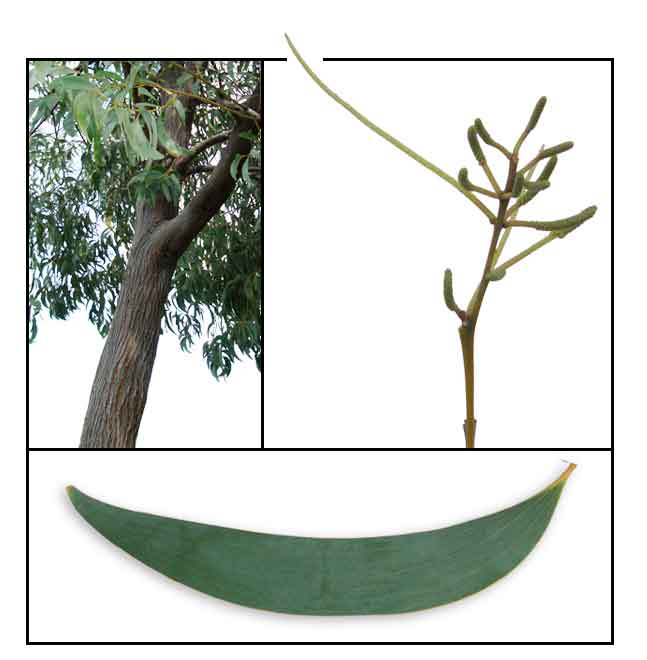Botany
Acacia crassicarpa is a small- to medium-sized tree, growing
to 25 meters high. Trunk is often straight and branchless for 13 to 18 meters. Crown is heavily branched and spreading. Bark is dark brown,
hard with deep vertical furrows; the inner bark is red and fibrous.
The leaves are winged and curved like a sickle, 8 to 20 centimeter by 1 to 4 centimeters,
greyish green and glabrous. Inflorescence is a bright yellow spike,
clustered in groups of 2 to 6. Pods are woody, oblong-ovoid, flat, 5 to 8 centimeters long,
2 to 3 centimeters wide, glabrous, dull brown, transversely veined. Seeds are oblongoid, 5 to 6 millimeters by 2 to 3 millimeters wide, black and arranged in separate compartments.
Distribution
- Recently introduced and popular used
as an ornamental shade tree.
- In landscaping, considered a "grow fast" tree.
- Native to Australia, Indonesia, Papua New Guinea.
- Exotic in China, Fiji, Malaysia, Thailand.
Constituents
- Study of the chemical components from 5 families of A. crassicarpa showed every family yielded cellulose greater than 58%, lignin about 25%, and low ash ranging from 0.19 to 0.33%. (3)
Uses
Edibility
- It has an edible gum which forms a tofee when soaked in water with honey.
- The roots are cooked and eaten.
Folkloric
- No recorded medicinal use
in the Philippines.
- The gum, roots, leaves, bark. pods and seeds have been used by aboriginal
Australians in decoction, poultice, tonics or inhalations for a variety
of ailments — diarrhea, dysentery, sore eyes, colds, sore eyes
and skin conditions. (5)
Other uses
- Firewood: Wood dries rapidly and is good for
firewood and charcoal.
- Kraft / Pulp: Suitable for kraft pulping.
- Timber: Wood is strong and durable. The wood was used for manufacturing weapons and tools. Suitable for a wide range of timber end-uses, structural or decorative applications like construction, furniture, flooring, boat building. (5)
- Mulch: Leaves decompose slowly; useful as mulch.
Studies
• Phenolic Compounds
/ Antioxidants: Bioactive phenolic substances have been
found in the heartwood, sapwood and knots of Acacia crassicarpa. (1)
• Chemical Components of Wood / Pulping: Study of chemical components of wood from 5 families of A. crassicarpa showed it can be used as raw material for pulping. (see constituents above) (3)
• Phytoremediation: Phytoremediation study showed the provision of fly ash and dreg significantly affected the growth of A. crassicarpa and its efficiency of metal uptake. Most heavy metals accumulated in the roots and the largest uptake efficiency was at the plant roots. (6)
Availability
Ornamental cultivation.
|





